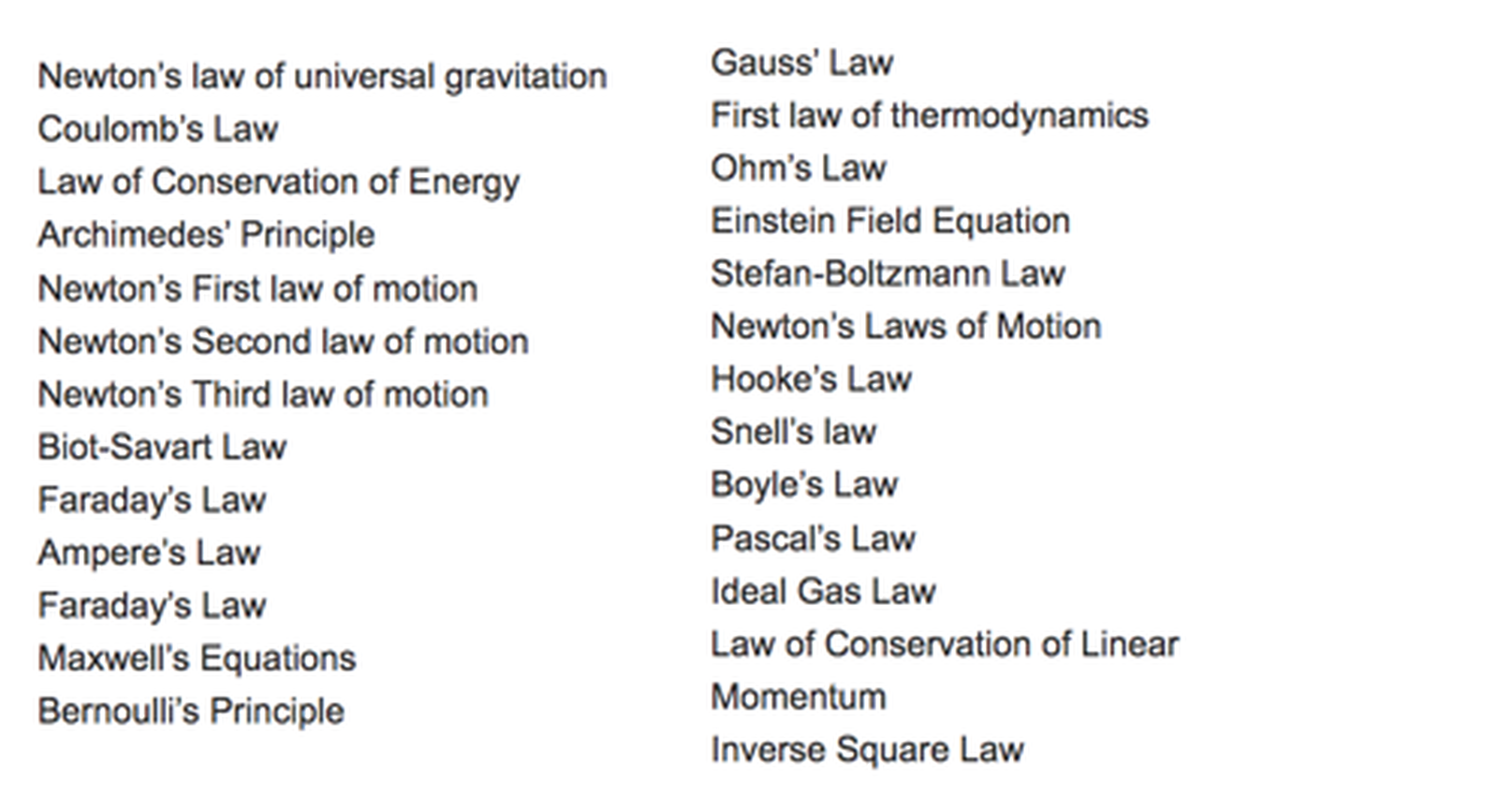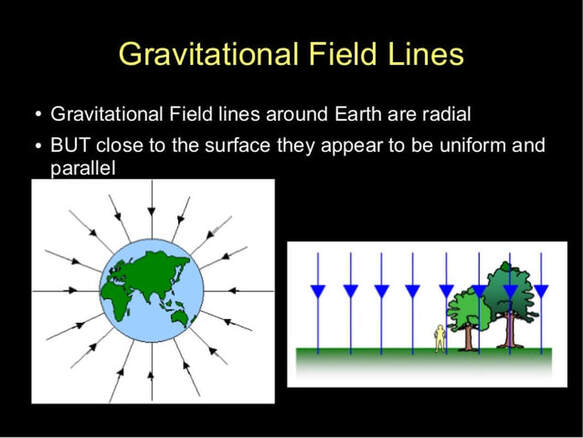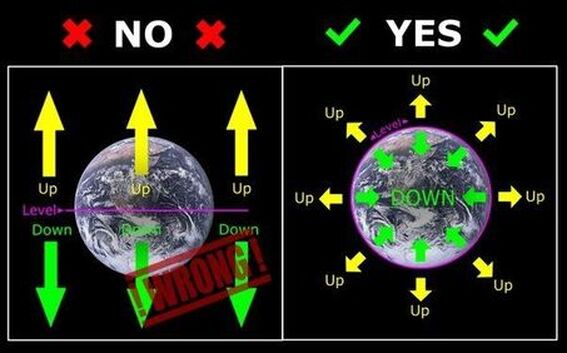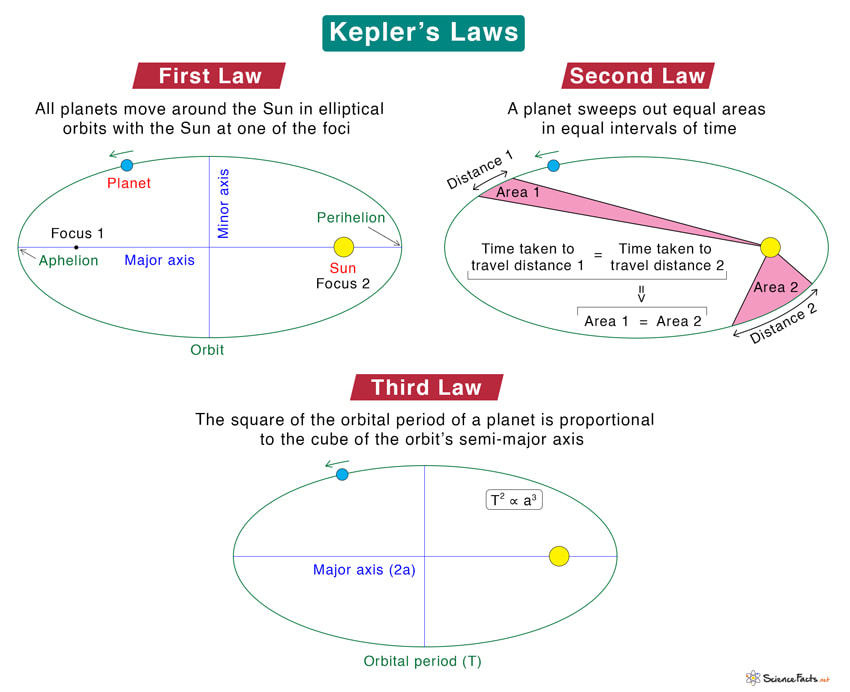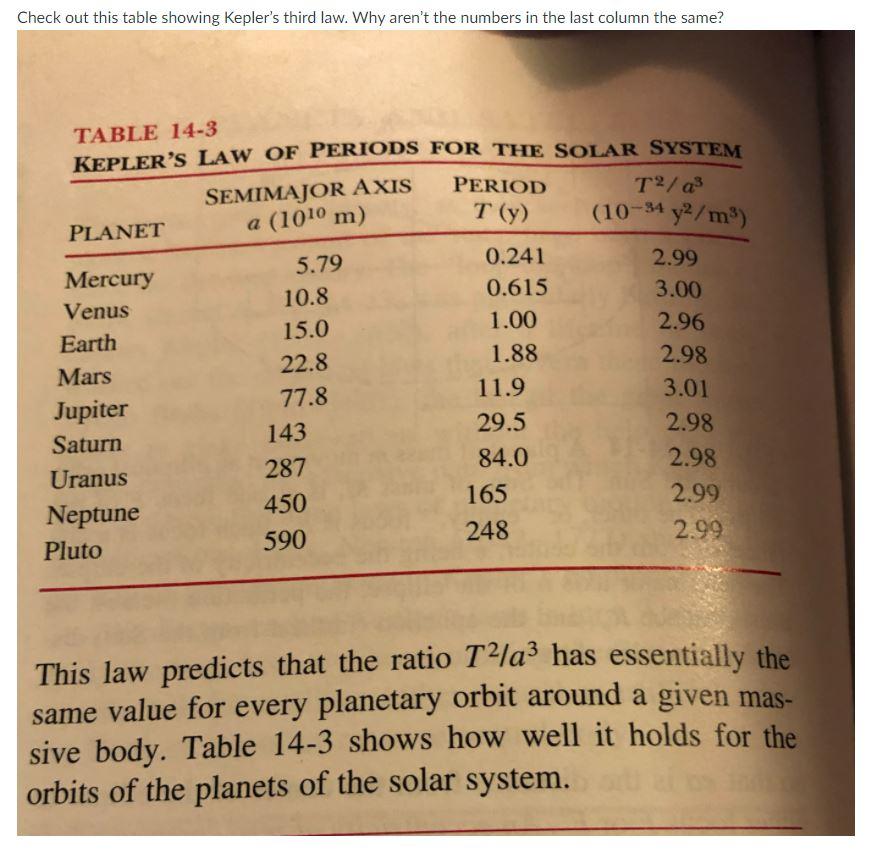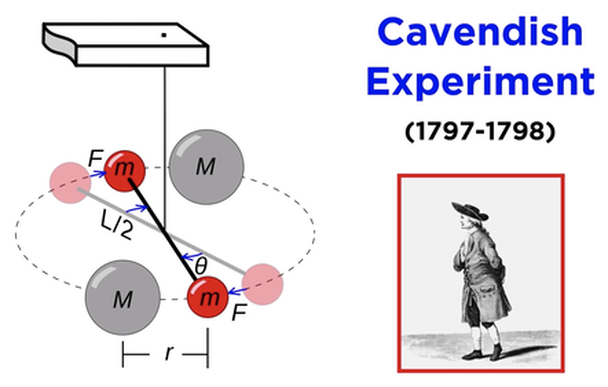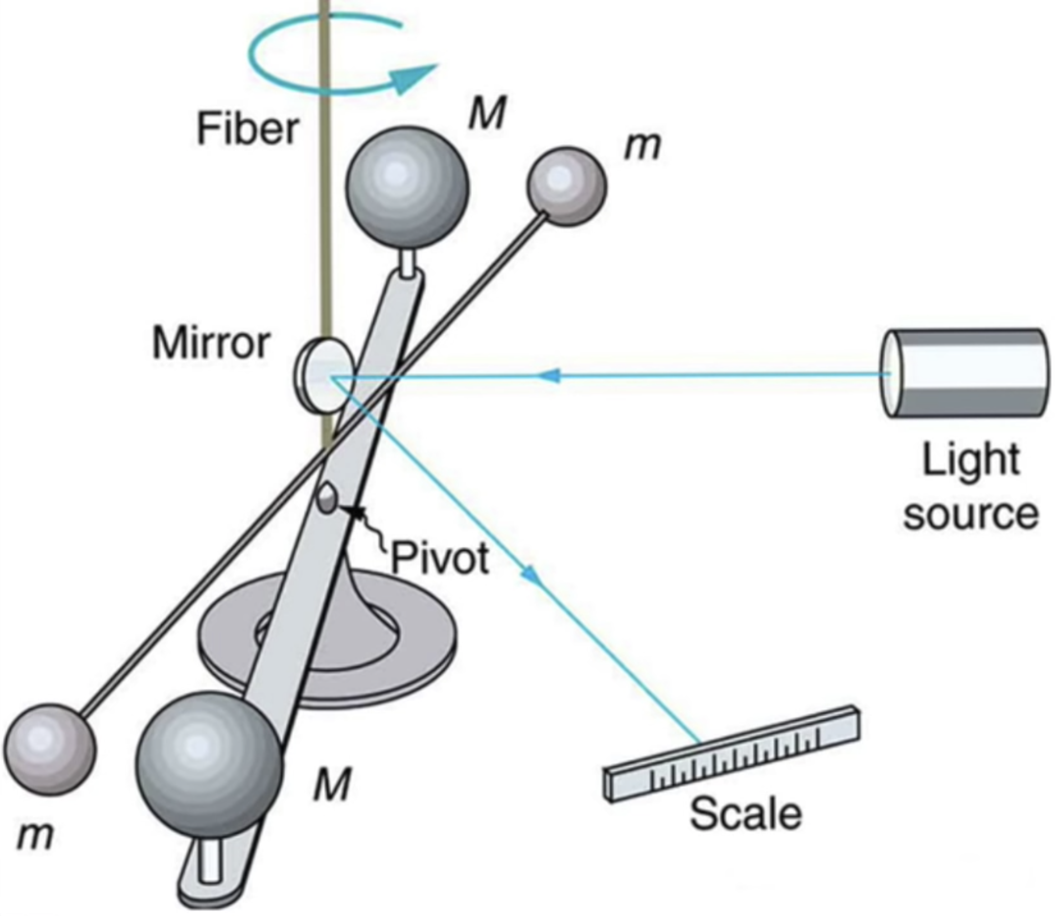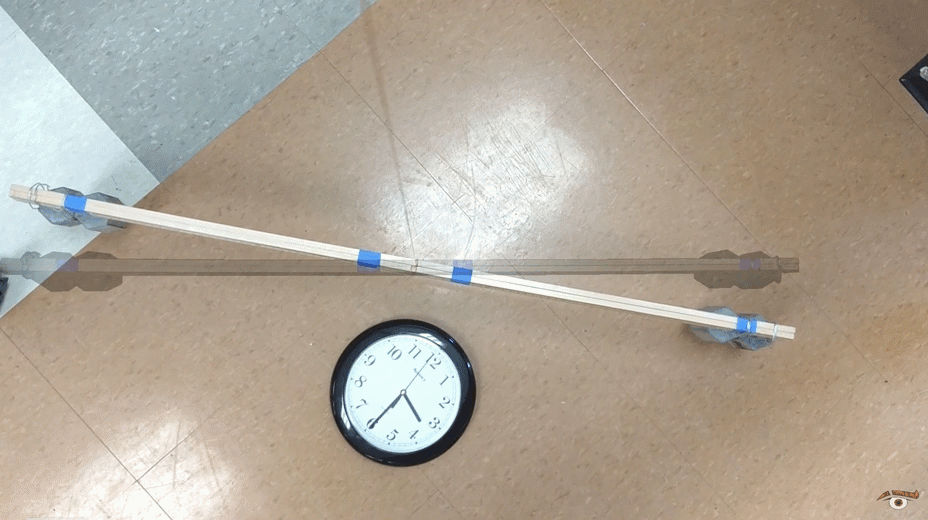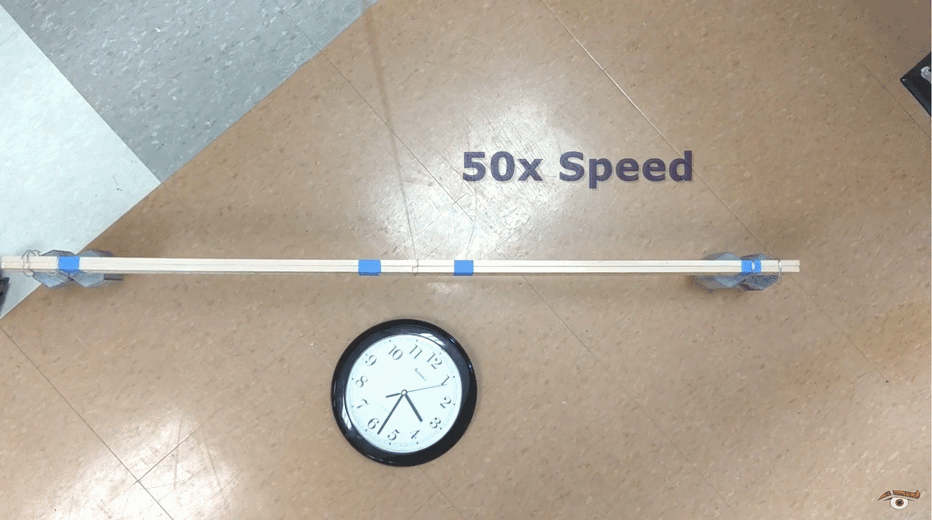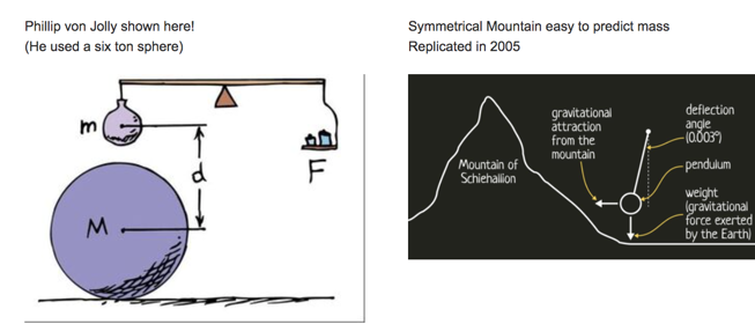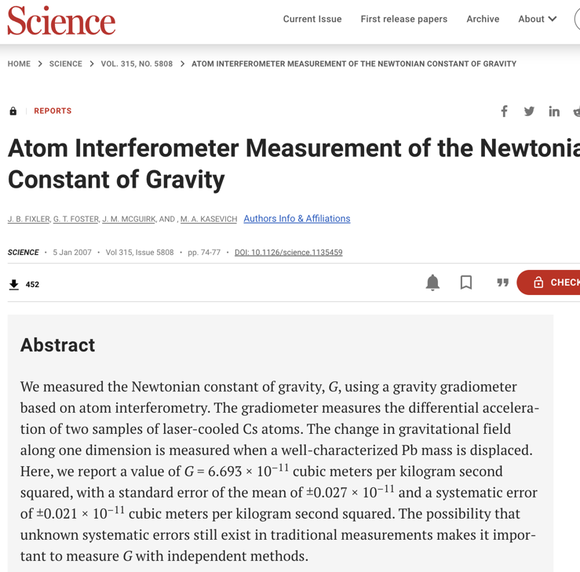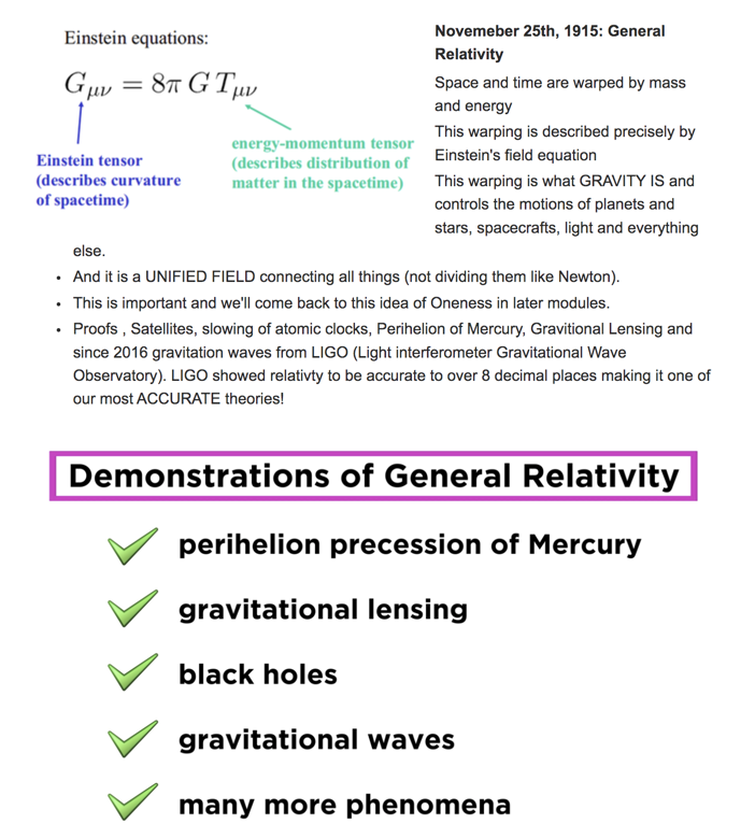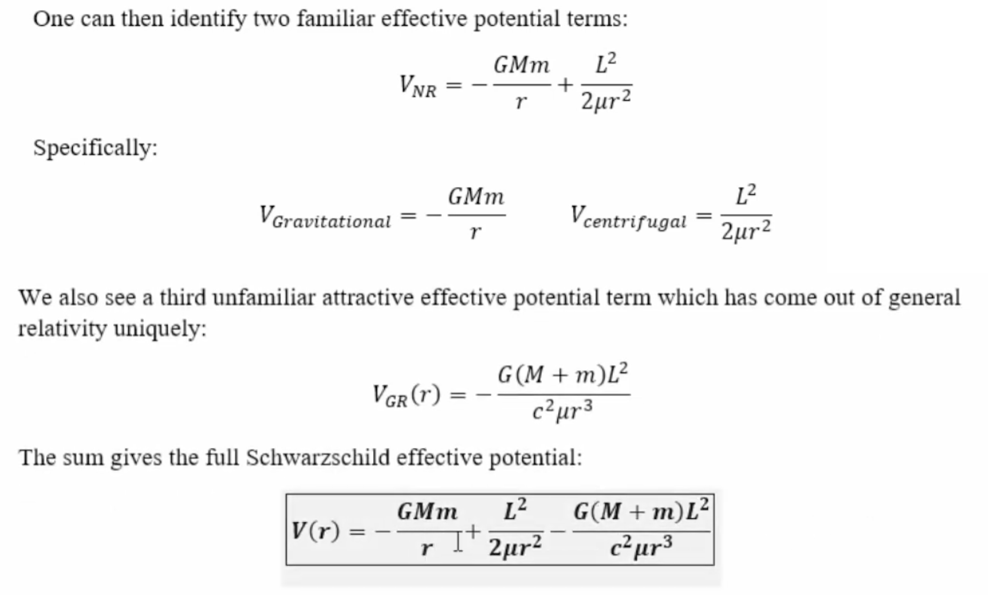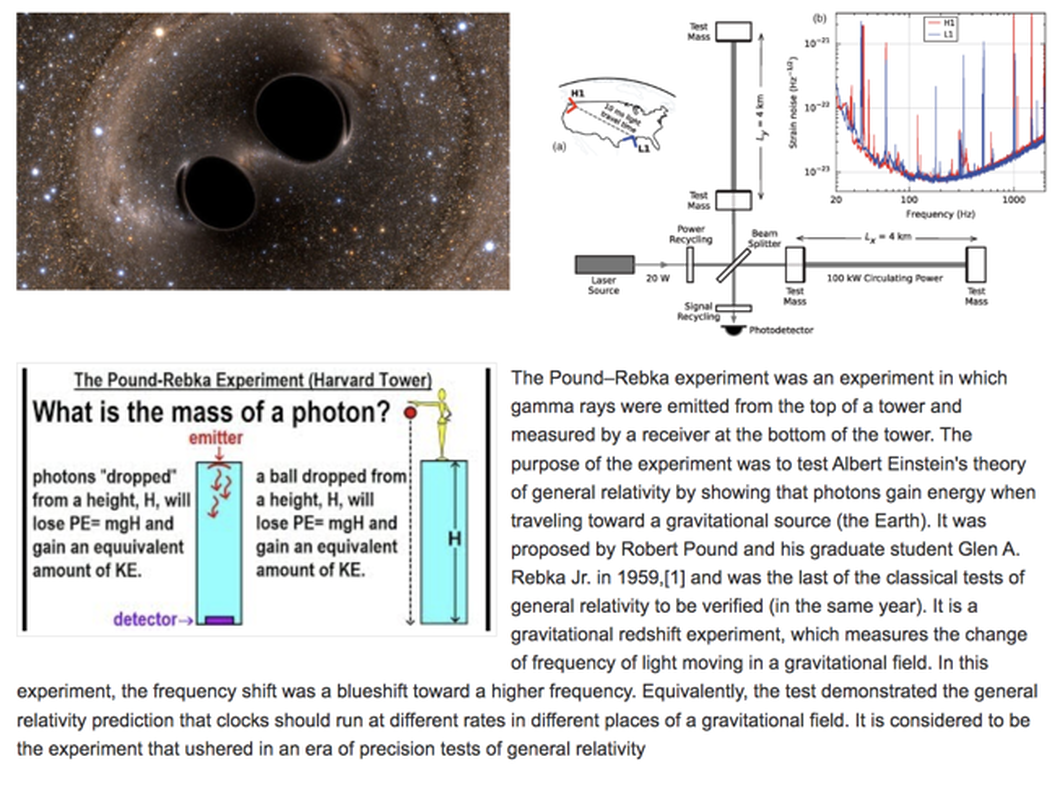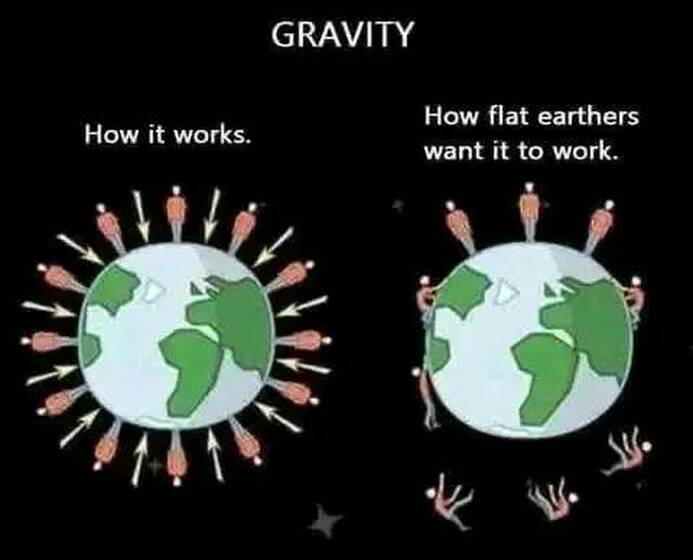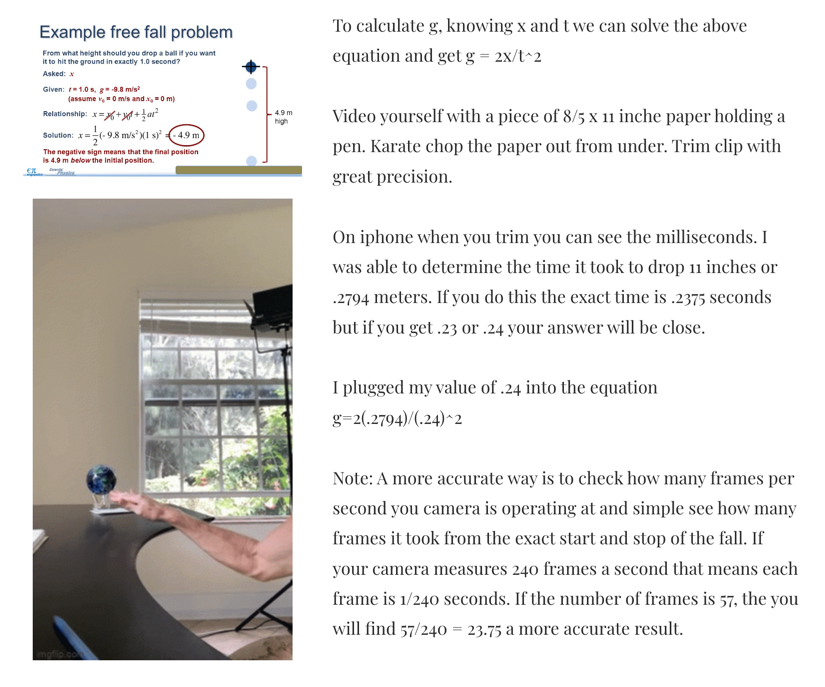Logical Cannot Prove Things
**Logic and Reason are the foundation for a Hypothesis, not a conclusion. They are an excellent place to start research but are not a substitute for it. One must understand that a person's Logic and Reason are limited to their own personal experiences and beliefs.**
It only may work if you throw all known physics and its applications (e.g. GPS and other satellites) out of the window. But then you can assume ("prove") anything. To show the contradictions of their hypothesis we likely have to use math, which goes way over their heads.
Demand that they show the math of their hypothesis. If they can't, their hypothesis are unfalsifiable and therfore useless. If their hypothesis of the aether is correct, then there must be mathematical descriptions (equations) that contain terms referencing properties of an aether. In the Lorentz transformations of SR there is no reference to an aether whatsoever, only speeds, positions and times. So no aether is involved. If a hypothesis is valid, then it is possible to describe it with equations. If there are no such equations possible, than it can not be real. Reality can always be described with math that describes quantitatively the relations between some real properties. If they cannot provide a mathematical description of the aether and its properties, than they have nothing of substance, nothing that describes reality, only fantasy.
Sorry, if I'm not very helpful in this case. Walter.
**Logic and Reason are the foundation for a Hypothesis, not a conclusion. They are an excellent place to start research but are not a substitute for it. One must understand that a person's Logic and Reason are limited to their own personal experiences and beliefs.**
It only may work if you throw all known physics and its applications (e.g. GPS and other satellites) out of the window. But then you can assume ("prove") anything. To show the contradictions of their hypothesis we likely have to use math, which goes way over their heads.
Demand that they show the math of their hypothesis. If they can't, their hypothesis are unfalsifiable and therfore useless. If their hypothesis of the aether is correct, then there must be mathematical descriptions (equations) that contain terms referencing properties of an aether. In the Lorentz transformations of SR there is no reference to an aether whatsoever, only speeds, positions and times. So no aether is involved. If a hypothesis is valid, then it is possible to describe it with equations. If there are no such equations possible, than it can not be real. Reality can always be described with math that describes quantitatively the relations between some real properties. If they cannot provide a mathematical description of the aether and its properties, than they have nothing of substance, nothing that describes reality, only fantasy.
Sorry, if I'm not very helpful in this case. Walter.
|
Observations
#1 things Fall #2 even things of different mass fall at the same rate #3 this rate matches F=GMm/r² which gives us F=m * g (where g is ~9.8m/s² around the surface of the Earth), #4 gravity cannot be shielded #5 Doesn't have polarity #6 It is only proportional to mass, not the composition of the material |
Effects of Gravity
1. Defines the force by which mass attracts mass 2. Defines up and down (vestibular system detects acceleration only - without gravity, no orientation) 3. Defines level 4. Directly causes buoyancy 5. All large objects will seek to have their mass as close to the center of mass as possible. 6. Unless another force acts on them, all large objects will collapse into a sphere. |
Just because Newton didn't know the mechanism doesn't mean Newton Laws are not a law. The definition of a scientific law doesn't state the inventor of the law needs to know the mechanism?? They work in our inertial reference frame!
===> Einstein gave a better answer for the mechanism and likely a quantum theory of gravity better yet.
Just because Mendel didn't know why hereditary traits were passed on doesn't make Mendels law any less valid. They Work!
===> Darwin gave a better understanding for laws of hereditary and likely a better theory of evolution will come along
Just because Snell didn't know the mechanism behind Snell's laws doesn't make any difference. THEY WORK.
===> Quantum mechanics gave a better understanding of Snell's laws
Seriously bro, you REALLY DO NOT KNOW HOW SCIENCE WORKS, how laws work, how theories work.
It is so clear from your remarks.
This is all online take the time and learn it! For someone who claims to be so smart, why don't you get this???
===> Einstein gave a better answer for the mechanism and likely a quantum theory of gravity better yet.
Just because Mendel didn't know why hereditary traits were passed on doesn't make Mendels law any less valid. They Work!
===> Darwin gave a better understanding for laws of hereditary and likely a better theory of evolution will come along
Just because Snell didn't know the mechanism behind Snell's laws doesn't make any difference. THEY WORK.
===> Quantum mechanics gave a better understanding of Snell's laws
Seriously bro, you REALLY DO NOT KNOW HOW SCIENCE WORKS, how laws work, how theories work.
It is so clear from your remarks.
This is all online take the time and learn it! For someone who claims to be so smart, why don't you get this???
"No one must think that Newton’s great creation can be overthrown in any real sense by this or by any other theory. His clear and wide ideas will forever retain their significance as the foundation on which our modern conceptions of physics have been built."
-Albert Einstein
General Relativity - Cause of Gravity , the why and how
5. Perihelion precession of Mercury
6. Gravitational Lensing (one of first proofs in 1919 during eclipse
7. GPS - 38uSecond error is not accounted for = 45 (gravity slower) -7 (velocity faster) = 38uS ==> 11km Error!!
8. Pound Rebka Experiment
9. LIGO observations - Confirmed Einstein to several decimal places
-Albert Einstein
General Relativity - Cause of Gravity , the why and how
5. Perihelion precession of Mercury
6. Gravitational Lensing (one of first proofs in 1919 during eclipse
7. GPS - 38uSecond error is not accounted for = 45 (gravity slower) -7 (velocity faster) = 38uS ==> 11km Error!!
8. Pound Rebka Experiment
9. LIGO observations - Confirmed Einstein to several decimal places
The human body has a vestibular system that tells us our spatial orientation. We can sense which way is up or down, even when blindfolded and upside down. The vestibular system detects acceleration. If it cannot perceive any acceleration
Gravity is one of the, if not THE most well tested law in all of physics!
I welcome any proof that the felt force of gravity is not proportional to the mass. You can scream electrostatics, density and buoyancy all you want but that isn't evidence or proof. You'd have to show me a fairly conclusive experiment that shows the well-documented, well-tested model is wrong.
Newtons laws of motion are are empirical facts. You cannot say these things are not true when they are Part of everyday engineering. When we build bridges, we actually have to use Newtons Laws to build that bridge properly. We use it for bridges, roads, buildings, cranes, tools, planes, helicopters, cars, trains, engines, modern ships, musical instruments, satellites, Springs, slings, waves, projectile motions, rocket motion, the motion of planets, and so on and so forth? and more.
Computer model predicted and prediction
Only models that can reliably make predictions are the ones that should be modeled and followed.
It doesn't really matter "what" Gravity is, what matters is what we do know about how it works and what are the unavoidable consequences of that knowledge, in our experience of the world -- our Physics.
**The force attracting us to the Earth is self-evident. Something pulls us down, and we call that force gravity. It is not magnetism, because that affects different materials differently and some materials not at all, including many that are pulled to the Earth just as we are, e.g. water. It is not related to electricity; we have no way of generating it using electrical apparatus, or of neutralising it. It is not the strong nuclear force, nor the weak one. It is something else, and it requires no proof of existence.
1) In the Heliocentric model Gravity is the mutual attraction of Mass proportional to F=GMm/r²
2) Mass has inertia (or momentum) which means it continues moving unless some Force acts upon it.
==> Both of these are empirical laws of Nature and out of them you get almost all observed behavior -- large masses will reach a hydrostatic equilibrium forming a spheroid shape (rotating masses will form oblate spheroids); large bodies of gas will reach critical mass and begin to fuse hydrogen into helium, giving off a heat signature exactly as our Sun does; smaller rocky bodies will form elliptical orbits based on the conservation laws; everything we observe falls out of these few simple and empirical Laws.
And yes Gravity is well observed and measured, even at the atomic level.
==> Given this the fact that a massive body like the Earth pulls everything towards the center is not astonishing in the slightest.
I welcome any proof that the felt force of gravity is not proportional to the mass. You can scream electrostatics, density and buoyancy all you want but that isn't evidence or proof. You'd have to show me a fairly conclusive experiment that shows the well-documented, well-tested model is wrong.
Newtons laws of motion are are empirical facts. You cannot say these things are not true when they are Part of everyday engineering. When we build bridges, we actually have to use Newtons Laws to build that bridge properly. We use it for bridges, roads, buildings, cranes, tools, planes, helicopters, cars, trains, engines, modern ships, musical instruments, satellites, Springs, slings, waves, projectile motions, rocket motion, the motion of planets, and so on and so forth? and more.
Computer model predicted and prediction
Only models that can reliably make predictions are the ones that should be modeled and followed.
It doesn't really matter "what" Gravity is, what matters is what we do know about how it works and what are the unavoidable consequences of that knowledge, in our experience of the world -- our Physics.
**The force attracting us to the Earth is self-evident. Something pulls us down, and we call that force gravity. It is not magnetism, because that affects different materials differently and some materials not at all, including many that are pulled to the Earth just as we are, e.g. water. It is not related to electricity; we have no way of generating it using electrical apparatus, or of neutralising it. It is not the strong nuclear force, nor the weak one. It is something else, and it requires no proof of existence.
1) In the Heliocentric model Gravity is the mutual attraction of Mass proportional to F=GMm/r²
2) Mass has inertia (or momentum) which means it continues moving unless some Force acts upon it.
==> Both of these are empirical laws of Nature and out of them you get almost all observed behavior -- large masses will reach a hydrostatic equilibrium forming a spheroid shape (rotating masses will form oblate spheroids); large bodies of gas will reach critical mass and begin to fuse hydrogen into helium, giving off a heat signature exactly as our Sun does; smaller rocky bodies will form elliptical orbits based on the conservation laws; everything we observe falls out of these few simple and empirical Laws.
And yes Gravity is well observed and measured, even at the atomic level.
==> Given this the fact that a massive body like the Earth pulls everything towards the center is not astonishing in the slightest.
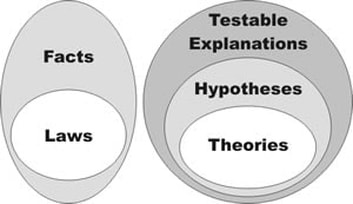
1. The fact of gravity.
2. The theor(y)(ies) of gravity.
3. The law(s) of gravity.
1. The fact of gravity.
Take a ball. Drop it. watch it fall. You have just observed the fact of gravity. It is an observed phenomenon in nature.
2. The theor(y)(ies) of gravity.
The theories of gravity are Newton’s and Einstein’s theories. These theories explain the observed facts. They both work well. Newton’s theories are enough to get a rocket to the Moon or Mars. In extreme circumstances, like near the speed of light, Newton’s theory does not explain the observed facts, so we use Einstein’s theories. Newton is not wrong, just not entirely right. When Newton was alive people didn’t observe super massive objects or particles moving near the speed of light. As these new facts were observed, theories were updated to match the observed facts. That is how science works.
3. The law(s) of gravity.
The laws of gravity are mathematical formulas that can be used to express the theories of gravity in a precise mathematical form.
With suitable clarification, Newton’s laws are imported into both general relativity and quantum mechanics. It is easiest to see this by stating Newton’s laws as “conservation of energy&momentum” and recognizing this (as local law) is still a fundamental of all physics.
The substantive existence of spacetime is actually proven false in quantum mechanics. The refusal of physicists to recognise this is the major reason why they think quantum mechanics cannot be understood.
2. The theor(y)(ies) of gravity.
3. The law(s) of gravity.
1. The fact of gravity.
Take a ball. Drop it. watch it fall. You have just observed the fact of gravity. It is an observed phenomenon in nature.
2. The theor(y)(ies) of gravity.
The theories of gravity are Newton’s and Einstein’s theories. These theories explain the observed facts. They both work well. Newton’s theories are enough to get a rocket to the Moon or Mars. In extreme circumstances, like near the speed of light, Newton’s theory does not explain the observed facts, so we use Einstein’s theories. Newton is not wrong, just not entirely right. When Newton was alive people didn’t observe super massive objects or particles moving near the speed of light. As these new facts were observed, theories were updated to match the observed facts. That is how science works.
3. The law(s) of gravity.
The laws of gravity are mathematical formulas that can be used to express the theories of gravity in a precise mathematical form.
With suitable clarification, Newton’s laws are imported into both general relativity and quantum mechanics. It is easiest to see this by stating Newton’s laws as “conservation of energy&momentum” and recognizing this (as local law) is still a fundamental of all physics.
The substantive existence of spacetime is actually proven false in quantum mechanics. The refusal of physicists to recognise this is the major reason why they think quantum mechanics cannot be understood.
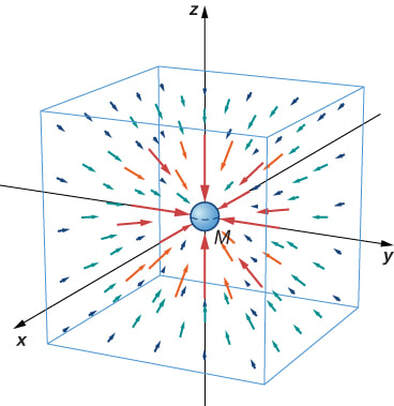
Why are worlds spherical? Gravity is a force, in all matter, that pulls symmetrically inwards.
A sphere is the inevitable resulting shape when the inward force of gravity is greater than the tensile force of whatever rock or metal that a world is made of.
Sphere's are in equilibrium, all the forces balance. Maximum surface to volume, lowest energy state, all points on surface equidistant from center of mass.
The inverse square law of gravity literally defines a sphere!
A sphere is the inevitable resulting shape when the inward force of gravity is greater than the tensile force of whatever rock or metal that a world is made of.
Sphere's are in equilibrium, all the forces balance. Maximum surface to volume, lowest energy state, all points on surface equidistant from center of mass.
The inverse square law of gravity literally defines a sphere!
FLAT EARTH CLAIM: Not a single experiment in history, however, has shown an object massive enough to, by virtue of its mass alone, cause other smaller masses to be attracted to it as Newton claims “gravity” does with Earth, the Sun, Moon, Stars and Planets.
WRONG!!
Cavendish experiment:
The Cavendish experiment, performed in 1797–98 by British scientist Henry Cavendish, was the first experiment to measure the force of gravity between masses in the laboratory and the first to yield accurate values for the gravitational constant.
1.The Cavendish experiment was the first experiment to measure gravity between masses in the laboratory.
2.The experiment has been repeated numerous times over two centuries with consistent results.
3.Many other types of experiments also confirmed it like the only done by Phillip von Jolly shown here!
(He used a six ton sphere)
Build A Big Box, Telescope to look at minute changes.
It is very difficult to get to work. Likely it broke.
Gravity is by far the weakest. Logical Fallacy of personal incredulity.
Saying something small. 50 million to 1.
Cavendish over a year multiple readings.
WRONG!!
Cavendish experiment:
The Cavendish experiment, performed in 1797–98 by British scientist Henry Cavendish, was the first experiment to measure the force of gravity between masses in the laboratory and the first to yield accurate values for the gravitational constant.
1.The Cavendish experiment was the first experiment to measure gravity between masses in the laboratory.
2.The experiment has been repeated numerous times over two centuries with consistent results.
3.Many other types of experiments also confirmed it like the only done by Phillip von Jolly shown here!
(He used a six ton sphere)
Build A Big Box, Telescope to look at minute changes.
It is very difficult to get to work. Likely it broke.
Gravity is by far the weakest. Logical Fallacy of personal incredulity.
Saying something small. 50 million to 1.
Cavendish over a year multiple readings.
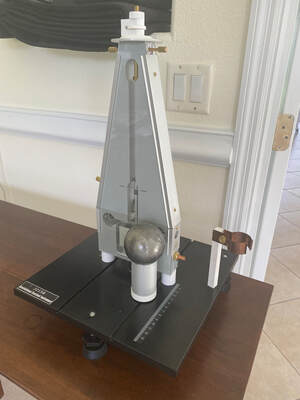
I have a Cavendish device and have done the experiment as have thousands of students every year and hundreds and hundreds of labs have done with amazing precision. When done carefully, it very accurately measures the gravitational constant which you can then use to accurately measure the mass of the earth and CONFIRM the downward acceleration (The Flat earth has NO model and hence no way to predict this downward acceleration which we all observe). Also these accurate calculations allow us to use Newton's laws with AMAZING accuracy! Success leaves clues and Literally the world around you (all the buildings, bridges, roads, structures, etc are ALL based on Newton's laws).
The most sensitive Cavendish ever performed confirms G, the gravitational constant to 5 decimal places.
This is EMPIRICAL PROOF of Newton's Universal Law of gravity and proof Newtons laws work. Newton's Universal Law of Gravitation is a Law because it always works and NEVER has been disproven in its domain of application (speeds not near the speed of light and gravitational fields not too extreme). Never falsified. On earth they work perfectly, because we don't live on a black hole, and we are not traveling near the speed of light. If we were in these extreme conditions we would need to use General Relativity which is more accurate but extremely difficult to work with.
GREAT Video on Cavendish!
https://www.youtube.com/watch?v=2PdiUoKa9Nw
The most sensitive Cavendish ever performed confirms G, the gravitational constant to 5 decimal places.
This is EMPIRICAL PROOF of Newton's Universal Law of gravity and proof Newtons laws work. Newton's Universal Law of Gravitation is a Law because it always works and NEVER has been disproven in its domain of application (speeds not near the speed of light and gravitational fields not too extreme). Never falsified. On earth they work perfectly, because we don't live on a black hole, and we are not traveling near the speed of light. If we were in these extreme conditions we would need to use General Relativity which is more accurate but extremely difficult to work with.
GREAT Video on Cavendish!
https://www.youtube.com/watch?v=2PdiUoKa9Nw
Watch the Full Video - Debunk the Funk
https://www.youtube.com/watch?v=BYLlf7zbIlk
https://www.youtube.com/watch?v=BYLlf7zbIlk
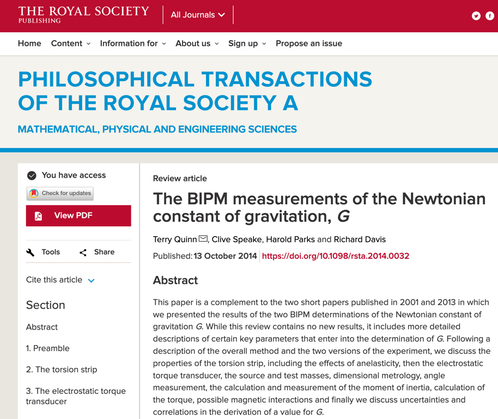
- The BIPM measurements of the Newtonian constant of gravitation, G
- Terry Quinn, Clive Speake, Harold Parks, and Richard Davis
- Published 2014
- The torsion bar is in a vacuum chamber
- Tested and controlled for magnetic susceptibility Copper-Tellurium alloy masses
- https://royalsocietypublishing.org/doi/full/10.1098/rsta.2014.0032
- https://royalsocietypublishing.org/doi/pdf/10.1098/rsta.2014.0032
- Direct PDF Download
- Flat earthers' are always asking for evidence of mass attracting mass, and the best answer for this is the Cavendish experiment which includes now 200-300 peer reviewed studies confirming G to great accuracy. I have personally done this experiment myself, and I actually HAVE a cavendish device!
- Careful Cavendish experiments like this measure the strength of the mass to mass attraction, not just THAT it exists but it is a measurement of the exact quantity and magnitude.
- Referring to below: A= four source masses, B= test masses, C= whole apparatus rotates, D=dotted lines around boundaries of vacuum chamber to isolate it from air currents. The whole thing is at the same electrostatic potential so the electrostatic forces are negated. It is horizontal and NOT VERTICAL so no electrostatic gradient or voltage argument can hold.
This and similar experiments are real and empirical measurements of mass attracting mass and they explain in painstaking detail how they did it! This experiment is literally a PARAGON of HOW SCIENCE IS DONE! The evidence for gravity existing is overwhelming.
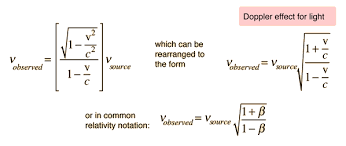
Cavendish Objections
Incredibly well validated!
Original Experiment:
https://royalsocietypublishing.org/doi/epdf/10.1098/rstl.1798.0022
One of the best measurements is recorded below (results to the right).
https://www.npl.washington.edu/eotwash/gravitational-constant
Flat earthers love to throw around there misunderstanding of the data from Planck and WMAP that only 4% of the universe is physical matter (baryonic mass). The very fact, that baryonic mass makes up only 4% of the total universe has NOTHING to do with smaller scales. The hypothetic dark matter and dark energy influence the behavior of the universe at very large scales.
Again when it comes to the Universe the Flat Earthers don't understand scale.
COBE, WMAP and Planck have progressively refined the density of the Universe which is mostly empty.
It has an average density of 9.9 x 10-30 g/cm3, which is equivalent to only 5.9 protons per cubic meter. (From WMAP and Planck which includes dark natter and dark energy). Even if we assume, that it might be wrong by a factor of 100, the maximum density would 9.9 x 10–28 g/cm3.
If we have two balls of lead within let’s say 1 m³, can you tell me what the ”unknown” 97% of the mass of universe will have to our experiment? You can even take the complete volume of the lecture room, if you like.
G might not be applicable to the entire universe, because it takes only into account the baryonic mass, which is dominating our local world very likely up to the size of our galaxy, the milky way.
====
Other FE claims to debunk Cavendish.
***Cavendish looked through a telescope because of electrostatics (or whatever other reason): NO, He realized that even the smallest disturbance, such as that from the difference in air temperature between the two sides of the balance, would swamp the tiny force he wanted to measure. Cavendish placed the apparatus in a sealed room designed so he could move the weights from outside. He observed the balance with a telescope. By measuring how far the rod moved from side to side and how long that motion took, Cavendish could determine the gravitational force between the larger and smaller weights. He then related that force to the larger spheres’ weight to determine Earth’s mean density as 5.48 times that of water, or, in modern units, 5.48 grams per cubic centimetre—close to the modern value of 5.51 grams per cubic centimetre.
***It goes on about ionization and metal bonding and electron counts. It seems his argument is that the lead spheres could have been charged. They were joined by a metal bar so they would have been charged equally. They were suspended by a metal wire in a wooden building. If you have ever tried doing electrostatic experiments you would know that this is effectively a well earthed apparatus. You would need much higher quality insulation to get an electrostatic effect. This is particularly true where the experiment was conducted- Chatsworth House, Derbshire England. We don't have hot dry atmospheres very often!
***Additionally, if these lead sphere were somehow accidentally charged, then every time the experiment was repeated, the charge would be different and so the experiment would produce a different value for ‘G’. Well it gives a very similar result every time suggesting remarkable luck in consistently getting the same charge on the lead sphere by accidental means.
***The magnetic property of lead is that of diamagnetism. As a material, if lead is in the presence of a moving magnetic field (or one that is varying in strength), lead's magnetic property of diamagnetism causes the lead to produce its own magnetic field, which will be one that opposes the original magnetic field. So, if there were static charges moving towards the lead (and thus, not really static any longer), that would cause also a magnetic field to be generated by the materials that have the static charge. This magnetic field, interacting with the lead, would cause lead to generate its own magnetic field in opposition to the original field. but a field that produces a force that repels the moving magnetic field. So, lead's diamagnetic property is a separate, independent way to be able to rule out static charges causing this effect. If there were charges on the hanging masses, they'd actually cause lead's diamagnetic property to repel the masses, not attract them.
Incredibly well validated!
Original Experiment:
https://royalsocietypublishing.org/doi/epdf/10.1098/rstl.1798.0022
One of the best measurements is recorded below (results to the right).
https://www.npl.washington.edu/eotwash/gravitational-constant
Flat earthers love to throw around there misunderstanding of the data from Planck and WMAP that only 4% of the universe is physical matter (baryonic mass). The very fact, that baryonic mass makes up only 4% of the total universe has NOTHING to do with smaller scales. The hypothetic dark matter and dark energy influence the behavior of the universe at very large scales.
Again when it comes to the Universe the Flat Earthers don't understand scale.
COBE, WMAP and Planck have progressively refined the density of the Universe which is mostly empty.
It has an average density of 9.9 x 10-30 g/cm3, which is equivalent to only 5.9 protons per cubic meter. (From WMAP and Planck which includes dark natter and dark energy). Even if we assume, that it might be wrong by a factor of 100, the maximum density would 9.9 x 10–28 g/cm3.
If we have two balls of lead within let’s say 1 m³, can you tell me what the ”unknown” 97% of the mass of universe will have to our experiment? You can even take the complete volume of the lecture room, if you like.
G might not be applicable to the entire universe, because it takes only into account the baryonic mass, which is dominating our local world very likely up to the size of our galaxy, the milky way.
====
Other FE claims to debunk Cavendish.
***Cavendish looked through a telescope because of electrostatics (or whatever other reason): NO, He realized that even the smallest disturbance, such as that from the difference in air temperature between the two sides of the balance, would swamp the tiny force he wanted to measure. Cavendish placed the apparatus in a sealed room designed so he could move the weights from outside. He observed the balance with a telescope. By measuring how far the rod moved from side to side and how long that motion took, Cavendish could determine the gravitational force between the larger and smaller weights. He then related that force to the larger spheres’ weight to determine Earth’s mean density as 5.48 times that of water, or, in modern units, 5.48 grams per cubic centimetre—close to the modern value of 5.51 grams per cubic centimetre.
***It goes on about ionization and metal bonding and electron counts. It seems his argument is that the lead spheres could have been charged. They were joined by a metal bar so they would have been charged equally. They were suspended by a metal wire in a wooden building. If you have ever tried doing electrostatic experiments you would know that this is effectively a well earthed apparatus. You would need much higher quality insulation to get an electrostatic effect. This is particularly true where the experiment was conducted- Chatsworth House, Derbshire England. We don't have hot dry atmospheres very often!
***Additionally, if these lead sphere were somehow accidentally charged, then every time the experiment was repeated, the charge would be different and so the experiment would produce a different value for ‘G’. Well it gives a very similar result every time suggesting remarkable luck in consistently getting the same charge on the lead sphere by accidental means.
***The magnetic property of lead is that of diamagnetism. As a material, if lead is in the presence of a moving magnetic field (or one that is varying in strength), lead's magnetic property of diamagnetism causes the lead to produce its own magnetic field, which will be one that opposes the original magnetic field. So, if there were static charges moving towards the lead (and thus, not really static any longer), that would cause also a magnetic field to be generated by the materials that have the static charge. This magnetic field, interacting with the lead, would cause lead to generate its own magnetic field in opposition to the original field. but a field that produces a force that repels the moving magnetic field. So, lead's diamagnetic property is a separate, independent way to be able to rule out static charges causing this effect. If there were charges on the hanging masses, they'd actually cause lead's diamagnetic property to repel the masses, not attract them.
General Relativity
Also From Special Relativity showing Newtons laws are Applicable to our inertial frame.
So you are trying to say that Newton's laws of motion are totally irrelevant/inapplicable on object moving at relatively lower speeds ?
You want to know what effect mass-energy equivalence has on object moving at relatively slower speeds than light ? Here is a citation :
According to mass-energy equivalence ;
E ≈ mc^2 + 1/2mv^2
"In classical mechanics, both the m0c2 term and the high-speed corrections are ignored. The initial value of the energy is arbitrary, as only the change in energy can be measured, so the m0c2 term is ignored in classical physics. While the higher-order terms become important at higher speeds, the Newtonian equation is a highly accurate low-speed approximation; adding in the third term yields.
E ≈ mc^2 + 1/2mv^2(1 + 3v^2/4c^2)
The difference between the two approximations is given by 3v^2/4c^2 a number very small for everyday objects".
-Wiki article on mass-energy equivalence
So you are trying to say that Newton's laws of motion are totally irrelevant/inapplicable on object moving at relatively lower speeds ?
You want to know what effect mass-energy equivalence has on object moving at relatively slower speeds than light ? Here is a citation :
According to mass-energy equivalence ;
E ≈ mc^2 + 1/2mv^2
"In classical mechanics, both the m0c2 term and the high-speed corrections are ignored. The initial value of the energy is arbitrary, as only the change in energy can be measured, so the m0c2 term is ignored in classical physics. While the higher-order terms become important at higher speeds, the Newtonian equation is a highly accurate low-speed approximation; adding in the third term yields.
E ≈ mc^2 + 1/2mv^2(1 + 3v^2/4c^2)
The difference between the two approximations is given by 3v^2/4c^2 a number very small for everyday objects".
-Wiki article on mass-energy equivalence
Einstein was verified by Eddington ... Star locations changed exactly according Einsteins relativity. Eddington's 1919 eclipse observation set out to test the prediction that the sun's gravity would visibly divert light from nearby stars visible only during an eclipse.
Experiments Confirming General Relativity
1. Perihelion precession of Mercury
2. Gravitational Lensing (one of first proofs in 1919 during eclipse
3. GPS - 38uSecond error is not accounted for = 45 (gravity slower) -7 (velocity faster) = 38uS ==> 11km Error!!
4. Pound Rebka Experiment
5. LIGO observations - Confirmed Einstein to several decimal places
Experiments Confirming General Relativity
1. Perihelion precession of Mercury
2. Gravitational Lensing (one of first proofs in 1919 during eclipse
3. GPS - 38uSecond error is not accounted for = 45 (gravity slower) -7 (velocity faster) = 38uS ==> 11km Error!!
4. Pound Rebka Experiment
5. LIGO observations - Confirmed Einstein to several decimal places
LIGO (Light interferometer Gravitational Wave Observatory). LIGO showed relativity to be accurate to over 8 decimal places making it one of our most ACCURATE theories!
Most sensitive: At its most sensitive state, LIGO will be able to detect a change in distance between its mirrors 1/10,000th the width of a proton! This is equivalent to measuring the distance to the nearest star (some 4.2 light years away) to an accuracy smaller than the width of a human hair.
Most sensitive: At its most sensitive state, LIGO will be able to detect a change in distance between its mirrors 1/10,000th the width of a proton! This is equivalent to measuring the distance to the nearest star (some 4.2 light years away) to an accuracy smaller than the width of a human hair.
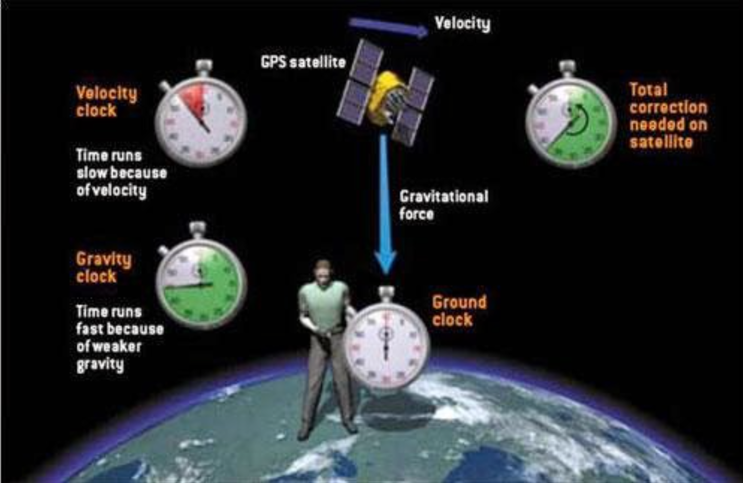
GPS is a good example of something that validates Einstein’s theories of relativity. GPS only works because the time keeping systems in the satellites are set to “tick” at a slightly different rate than clocks on the ground, because as relativity predicts, the time experienced at their greater distance from a gravity well plus their speed relative to any clock on the ground, will change the rate at which time flows relative to that ground clock. So they automatically adjust time for relativistic effects predicted by Einstein, which would throw the whole system off if Einstein had been wrong. So the fact that the adjustment works proves Einstein was right.
38uSecond error is not accounted for = 45 (gravity slower) -7 (velocity faster) = 38uS ==> 11km Error!!
38uSecond error is not accounted for = 45 (gravity slower) -7 (velocity faster) = 38uS ==> 11km Error!!
--
LIGO Paper, GR Proofs, GRavity waves and light.
DAVE video: 22:42
Gravitational waves are waves that propagate along the curvature of spacetime at the speed of light, which are produced when a massive body is accelerated. Postulated by Einstein as part of general relativity, they were first detected in 2016.
You are so much .Here is a document. Look at all the dummies. Instead of baseless dismissal, maybe you would like to be a big boy and show us where the methodology is invalid.
Signals did not arrive at the same time. 7millsecs apart.
Speed of light. 3002 kilometers.
8 light minutes ago sun still at the center of the solar system, where it always is.
In Oct 2017, LIGO and VIRGO in Italy both detected both gravity waves and light
The time difference allow them to triangulate a tiny patch of the sky as the source of the signal.
Low and behold the light detected by the gamma ray burst was detected by two separate spacecraft, fermi and integral from precisely the same area and within two seconds of the gravitational wave detection.
This was the first cosmic event detected in both gravitational waves and light which clearly demonstrates gravity traveling at the speed of light.
GR Proofs - 25:30 Dave
LIGO Paper, GR Proofs, GRavity waves and light.
DAVE video: 22:42
Gravitational waves are waves that propagate along the curvature of spacetime at the speed of light, which are produced when a massive body is accelerated. Postulated by Einstein as part of general relativity, they were first detected in 2016.
You are so much .Here is a document. Look at all the dummies. Instead of baseless dismissal, maybe you would like to be a big boy and show us where the methodology is invalid.
Signals did not arrive at the same time. 7millsecs apart.
Speed of light. 3002 kilometers.
8 light minutes ago sun still at the center of the solar system, where it always is.
In Oct 2017, LIGO and VIRGO in Italy both detected both gravity waves and light
The time difference allow them to triangulate a tiny patch of the sky as the source of the signal.
Low and behold the light detected by the gamma ray burst was detected by two separate spacecraft, fermi and integral from precisely the same area and within two seconds of the gravitational wave detection.
This was the first cosmic event detected in both gravitational waves and light which clearly demonstrates gravity traveling at the speed of light.
GR Proofs - 25:30 Dave
Problems with Newtonian Gravity and General Relativity and why its not a problem
No, it is not correct to say that general relativity does not accurately describe gravity on a galactic scale.
What is correct to say is that general relativity, along with only normal (baryonic) matter, does not accurately describe gravity on a galactic scale*.
However, general relativity, together with dark matter, accurately describes gravity on a galactic scale
We think classical mechanics is correct, even though both General Relativity and Quantum Mechanics proved it wrong. Yet we use classical mechanics every day, in a variety of disciplines including engineering and architecture, and we do so successfully: Our machines work, our buildings stand.
Why? Because the old theories were not proven blatantly wrong. What was demonstrated are the limits of their applicability. In everyday scenarios involving nonrelativistic speeds and gravitational fields that are not akin to black holes, Newtonian mechanics gives accurate answers; there’s no need to account for post-Newtonian corrections. In everyday scenarios that do not involve individual atoms or elementary particles (or fast speeds and strong gravity), classical physics works just fine. There’s no need to apply quantum corrections. There is no need to use General Relativity. It would be a waste of effort: a lot of extra computation would be spent on correcting what, a result past the tenth decimal digit?
That doesn’t mean that we don’t know what we are doing. It means we understand exactly how good (or how bad) these theories are, which means we know exactly what we are doing even if we do not have all the answers at cosmic or microscopic scales.
General relativity and quantum field theory yield accurate answers. Very accurate answers, tested through numerous high-precision experiments. Our theoretical works suggests (though by no means proves) that there are limits to their applicability, and that there are probably even better theories out there. But no, not because of the cosmological constant problem. That has many possible solutions well within the context of quantum field theory, the problem is that in the absence of experimental evidence, we have no basis to pick one over the other, and none of the solutions we know is without issues. There are more fundamental problems: the lack of a quantum theory of gravitation, a satisfactory model for neutrino masses, the ultra high energy behavior of the Standard Model… So no, we do not believe that these theories are the gospel. But as always, physics builds upon existing knowledge. Just as general relativity and quantum physics didn’t invalidate classical mechanics, but rather, refined it and extended its applicability, we expect future theories to also be incremental: existing theories (validated through numerous experiments) will not be discarded, but we will better understand their limits, and we’ll have better theories to probe Nature beyond those limits.
No, it is not correct to say that general relativity does not accurately describe gravity on a galactic scale.
What is correct to say is that general relativity, along with only normal (baryonic) matter, does not accurately describe gravity on a galactic scale*.
However, general relativity, together with dark matter, accurately describes gravity on a galactic scale
We think classical mechanics is correct, even though both General Relativity and Quantum Mechanics proved it wrong. Yet we use classical mechanics every day, in a variety of disciplines including engineering and architecture, and we do so successfully: Our machines work, our buildings stand.
Why? Because the old theories were not proven blatantly wrong. What was demonstrated are the limits of their applicability. In everyday scenarios involving nonrelativistic speeds and gravitational fields that are not akin to black holes, Newtonian mechanics gives accurate answers; there’s no need to account for post-Newtonian corrections. In everyday scenarios that do not involve individual atoms or elementary particles (or fast speeds and strong gravity), classical physics works just fine. There’s no need to apply quantum corrections. There is no need to use General Relativity. It would be a waste of effort: a lot of extra computation would be spent on correcting what, a result past the tenth decimal digit?
That doesn’t mean that we don’t know what we are doing. It means we understand exactly how good (or how bad) these theories are, which means we know exactly what we are doing even if we do not have all the answers at cosmic or microscopic scales.
General relativity and quantum field theory yield accurate answers. Very accurate answers, tested through numerous high-precision experiments. Our theoretical works suggests (though by no means proves) that there are limits to their applicability, and that there are probably even better theories out there. But no, not because of the cosmological constant problem. That has many possible solutions well within the context of quantum field theory, the problem is that in the absence of experimental evidence, we have no basis to pick one over the other, and none of the solutions we know is without issues. There are more fundamental problems: the lack of a quantum theory of gravitation, a satisfactory model for neutrino masses, the ultra high energy behavior of the Standard Model… So no, we do not believe that these theories are the gospel. But as always, physics builds upon existing knowledge. Just as general relativity and quantum physics didn’t invalidate classical mechanics, but rather, refined it and extended its applicability, we expect future theories to also be incremental: existing theories (validated through numerous experiments) will not be discarded, but we will better understand their limits, and we’ll have better theories to probe Nature beyond those limits.
Disproving General Relativity - Dark Matter and Dark Energy
Dark matter is there. Dark matter is not a prediction of a theory that could be proven wrong but an observation. There is more gravitational effect than our models account for. Dark matter is just a placeholder for something we cannot put our finger on at the moment. It has gravitational effect, the only thing we know that has gravitational effect is matter, so we call it matter. And we cannot see it so we call it dark. That’s all there is to it. It might be some entity our models don’t include yet or it might simply be a tiny flaw in our models. But the effect is there.
--
First of all, as others pointed out, dark matter and dark energy are invented precisely to ensure that Einstein’s theory works on all scales, with no modification.
But beyond that… did Einstein “disprove” Newtonian physics? Are we no longer allowed to use Newtonian equations of motion when designing a a bridge, a building, an airplane, a piece of machinery? Or could it be that Einstein’s theory represents a generalization of Newtonian physics, and that we found that Newtonian physics is valid only in the special case of weak gravitational fields and low velocities?
If it turns out that there is no dark matter or dark energy, making it necessary to modify Einstein’s theory, the same thing applies. Einstein’s theory would still work just fine, e.g., on the scale of the solar system, but we would know that it is a special case, and a more general theory is needed to describe the rotation of galaxies, the dynamics of galaxy clusters, and the entirety of the cosmos.
--
There are numerous observations that suggest the existence of dark matter, but they are all ultimately about gravitational effects. There has been no nongravitational detection of dark matter to date.
But the gravity part is not just about “the needs of general relativity”. Many of the observations in question, e.g., galaxy rotation curves, galaxy cluster dynamics, show significant effects attributed to dark matter at the Newtonian level. This is important: general relativity under most circumstances represents just a very tiny correction to Newtonian physics, whereas the effects attributed to dark matter are sometimes an order of magnitude greater than Newtonian gravity.
This also means that if one were to try to modify gravity theory instead of introducing dark matter, the modification has to work at the Newtonian level. Yet here in the solar system, experiments confirmed the predictions of general relativity with exquisite precision at the post-Newtonian level. So any proposed theory must satisfy these conflicting requirements: Not deviate from general relativity even at the post-Newtonian level in the solar system, but alter even Newtonian gravity on the scale of galaxies and beyond.
Vacuum Catastrophe and Zero Point Energy Casimir Effect
We think that nonrelativistic (Newtonian) mechanics is correct, even though Einstein proved it wrong. Yet we use Newtonian mechanics every day, in a variety of disciplines including engineering and architecture, and we do so successfully.
==> Bill Unruh and collaborators have argued that when the energy density of the quantum vacuum is modeled more accurately as a fluctuating quantum field, the cosmological constant problem does not arise.
Wang, Qingdi; Zhu, Zhen; Unruh, William G. (2017). "How the huge energy of quantum vacuum gravitates to drive the slow accelerating expansion of the Universe". Physical Review D. 95 (10): 103504
Dark matter is there. Dark matter is not a prediction of a theory that could be proven wrong but an observation. There is more gravitational effect than our models account for. Dark matter is just a placeholder for something we cannot put our finger on at the moment. It has gravitational effect, the only thing we know that has gravitational effect is matter, so we call it matter. And we cannot see it so we call it dark. That’s all there is to it. It might be some entity our models don’t include yet or it might simply be a tiny flaw in our models. But the effect is there.
--
First of all, as others pointed out, dark matter and dark energy are invented precisely to ensure that Einstein’s theory works on all scales, with no modification.
But beyond that… did Einstein “disprove” Newtonian physics? Are we no longer allowed to use Newtonian equations of motion when designing a a bridge, a building, an airplane, a piece of machinery? Or could it be that Einstein’s theory represents a generalization of Newtonian physics, and that we found that Newtonian physics is valid only in the special case of weak gravitational fields and low velocities?
If it turns out that there is no dark matter or dark energy, making it necessary to modify Einstein’s theory, the same thing applies. Einstein’s theory would still work just fine, e.g., on the scale of the solar system, but we would know that it is a special case, and a more general theory is needed to describe the rotation of galaxies, the dynamics of galaxy clusters, and the entirety of the cosmos.
--
There are numerous observations that suggest the existence of dark matter, but they are all ultimately about gravitational effects. There has been no nongravitational detection of dark matter to date.
But the gravity part is not just about “the needs of general relativity”. Many of the observations in question, e.g., galaxy rotation curves, galaxy cluster dynamics, show significant effects attributed to dark matter at the Newtonian level. This is important: general relativity under most circumstances represents just a very tiny correction to Newtonian physics, whereas the effects attributed to dark matter are sometimes an order of magnitude greater than Newtonian gravity.
This also means that if one were to try to modify gravity theory instead of introducing dark matter, the modification has to work at the Newtonian level. Yet here in the solar system, experiments confirmed the predictions of general relativity with exquisite precision at the post-Newtonian level. So any proposed theory must satisfy these conflicting requirements: Not deviate from general relativity even at the post-Newtonian level in the solar system, but alter even Newtonian gravity on the scale of galaxies and beyond.
Vacuum Catastrophe and Zero Point Energy Casimir Effect
We think that nonrelativistic (Newtonian) mechanics is correct, even though Einstein proved it wrong. Yet we use Newtonian mechanics every day, in a variety of disciplines including engineering and architecture, and we do so successfully.
==> Bill Unruh and collaborators have argued that when the energy density of the quantum vacuum is modeled more accurately as a fluctuating quantum field, the cosmological constant problem does not arise.
Wang, Qingdi; Zhu, Zhen; Unruh, William G. (2017). "How the huge energy of quantum vacuum gravitates to drive the slow accelerating expansion of the Universe". Physical Review D. 95 (10): 103504

The pull of Gravity proves the earth is a sphere
Here’s an interesting fact about mass: It attracts things to it. The force of attraction (gravity) between two objects depends on their mass and the distance between them. Simply said, gravity will pull toward the center of mass of the objects. To find the center of mass, you have to examine the object.
Consider a sphere. Since a sphere has a consistent shape, no matter where on it you stand, you have exactly the same amount of sphere under you. (Imagine an ant walking around on a crystal ball. From the insect’s point of view, the only indication of movement would be the fact the ant is moving its feet—the shape of the surface would not change at all.) A sphere’s center of mass is in the center of the sphere, which means gravity will pull anything on the surface of the sphere straight down toward the center of the sphere. This will occur no matter where on the surface the object is located.
On a sphere’s surface, gravity will pull you toward the sphere’s center of mass: straight down.
Here’s an interesting fact about mass: It attracts things to it. The force of attraction (gravity) between two objects depends on their mass and the distance between them. Simply said, gravity will pull toward the center of mass of the objects. To find the center of mass, you have to examine the object.
Consider a sphere. Since a sphere has a consistent shape, no matter where on it you stand, you have exactly the same amount of sphere under you. (Imagine an ant walking around on a crystal ball. From the insect’s point of view, the only indication of movement would be the fact the ant is moving its feet—the shape of the surface would not change at all.) A sphere’s center of mass is in the center of the sphere, which means gravity will pull anything on the surface of the sphere straight down toward the center of the sphere. This will occur no matter where on the surface the object is located.
On a sphere’s surface, gravity will pull you toward the sphere’s center of mass: straight down.
Consider a flat plane. The center of mass of a flat plane is in its center, so the force of gravity will pull anything on the surface toward the middle of the plane. That means that if you stand on the edge of the plane, gravity will be pulling you sideways toward the plane’s middle, not straight down like you usually experience when you stand on Earth.
I am quite positive that, even for Australians, an apple falls downwards, not sideways. But if you have your doubts, I urge you to try dropping something—just make sure it’s nothing that can break or hurt you.
A plane’s center of mass is in its middle—which means that gravity should pull objects toward the center of the plane.
I am quite positive that, even for Australians, an apple falls downwards, not sideways. But if you have your doubts, I urge you to try dropping something—just make sure it’s nothing that can break or hurt you.
A plane’s center of mass is in its middle—which means that gravity should pull objects toward the center of the plane.
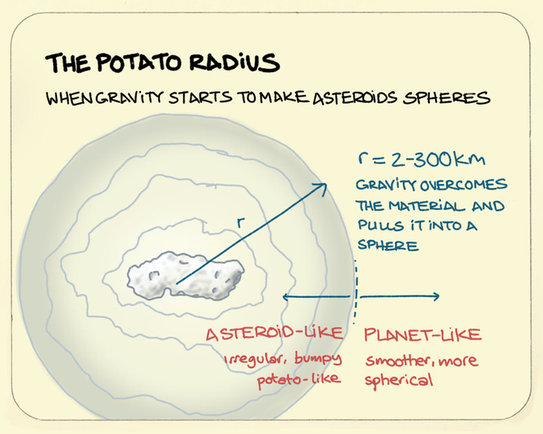
I like this radius. It kind of explains why asteroids are lumpy and bumpy, kind of like potatoes, and yet planets and moons are smooth round balls. It seems that from about this size, the mass of the rock itself gets large enough that it is pulled in on its own gravity, and consequently starts to round itself off.
Gravity is not the only force. There are many other forces. An object can be influenced by more than a force, and gravity is only one of them. An object is accelerated according to the sum of the forces affecting it.
Flat-Earthers take the fact there are objects that move against the direction of gravity as ‘evidence’ of the non-existence of gravity. They are wrong. There are forces other than gravity affecting the object, having the opposite direction from gravity, with at least the same magnitude.
Airplanes and birds fly because of lift and thrust that is greater than the force of gravity. An object can be stationary atop another object because of the normal force. Hot air balloons, clouds, and eggs in salt water can float if their buoyancy exceeds the force of gravity affecting them. Pieces of paper can go upward and stick to a comb because the electrostatic force attracting them is greater than gravity. An indoor skydiver can float because of drag from the wind is the same as the force of gravity. Fridge magnets can stick to the surface of a fridge because of their friction is holding them against gravity. A floating globe floats because of magnetic force repel it up against gravity. A wrecking ball does not fall down because of the tension from its chain holding it against the force of gravity.
The force of gravity can even counteract each other in the form of counterweight. An elevator (lift) that takes us up and down in a skyscraper has a counterweight having about the same mass as the elevator itself. This way, the motor does not need to hold the entire weight of the elevator and spends much less energy.
All the phenomenon where an object is in motion against the direction of gravity can be explained by mechanics and physics in a consistent manner.
Flat-Earthers take the fact there are objects that move against the direction of gravity as ‘evidence’ of the non-existence of gravity. They are wrong. There are forces other than gravity affecting the object, having the opposite direction from gravity, with at least the same magnitude.
Airplanes and birds fly because of lift and thrust that is greater than the force of gravity. An object can be stationary atop another object because of the normal force. Hot air balloons, clouds, and eggs in salt water can float if their buoyancy exceeds the force of gravity affecting them. Pieces of paper can go upward and stick to a comb because the electrostatic force attracting them is greater than gravity. An indoor skydiver can float because of drag from the wind is the same as the force of gravity. Fridge magnets can stick to the surface of a fridge because of their friction is holding them against gravity. A floating globe floats because of magnetic force repel it up against gravity. A wrecking ball does not fall down because of the tension from its chain holding it against the force of gravity.
The force of gravity can even counteract each other in the form of counterweight. An elevator (lift) that takes us up and down in a skyscraper has a counterweight having about the same mass as the elevator itself. This way, the motor does not need to hold the entire weight of the elevator and spends much less energy.
All the phenomenon where an object is in motion against the direction of gravity can be explained by mechanics and physics in a consistent manner.
Gravity
Two Main Theories of Gravity
Two Main Theories of Gravity
Gravity is a natural phenomenon by which all things with mass or energy are brought toward each other. In 1687, Isaac Newton explained the phenomenon as a force, which was formulated in Newton’s law of universal gravitation.
Flat-Earthers insist that gravity does not exist. But this is only a result of a mere ignorance on how gravity works. Everything in our lives is consistent with what is explained in Newton’s law of universal gravitation.
Gravity causes two objects with mass m1 and m2 to have the force F toward each other. The force F is weaker if the distance between them is farther. If they are twice farther, then F is four times smaller.
On Earth, Earth’s gravity exerts force to every object. We call this force as ‘weight’. In our illustration above, if m1 is the Earth, and m2 is an object, then the force of gravity exerted on m2 is what we call ‘weight of m2’.
Flat-Earthers insist that gravity does not exist. But this is only a result of a mere ignorance on how gravity works. Everything in our lives is consistent with what is explained in Newton’s law of universal gravitation.
Gravity causes two objects with mass m1 and m2 to have the force F toward each other. The force F is weaker if the distance between them is farther. If they are twice farther, then F is four times smaller.
On Earth, Earth’s gravity exerts force to every object. We call this force as ‘weight’. In our illustration above, if m1 is the Earth, and m2 is an object, then the force of gravity exerted on m2 is what we call ‘weight of m2’.
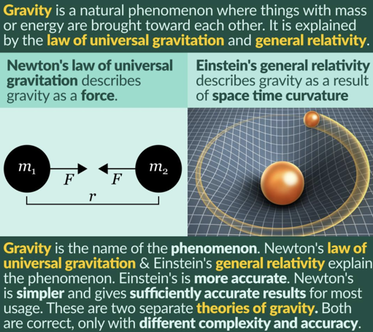
Some things cannot be explained by Newton’s law of universal gravitation, like the orbit of Mercury. To solve this problem, there is Einstein’s theory of general relativity, which is an entirely separate explanation of gravity, among other things.
The two theories are the correct explanations of gravity, and can reliably predict the outcome of the phenomenon.
“Gravity” is the name of the phenomenon. Newton’s law of universal gravitation and Einstein’s general relativity explain the phenomenon. Newton’s law of universal gravitation describes gravity as a force, while Einstein’s general relativity describes it as a result of space-time curvature.
Newton’s law of universal gravitation is more straightforward and gives sufficiently accurate results for most everyday usage. General relativity is far more accurate, but also much more complicated. General relativity can explain phenomena which cannot be explained using Newton’s law, and also describes some events unrelated to gravity.
However, there are very few cases involving gravity in our everyday lives that cannot be explained by Newton’s law of universal gravitation. It is why Newton’s law of gravity is used in a majority of situations in our lives.
Both Newton’s law of universal gravitation and Einstein’s theory of general relativity will yield the same results for practically every problem we encounter every day. But Newton’s explanation has the advantage of being much simpler than Einstein’s. It is the reason we are still using Newton’s law to solve everyday problems involving gravity.
The two theories are the correct explanations of gravity, and can reliably predict the outcome of the phenomenon.
“Gravity” is the name of the phenomenon. Newton’s law of universal gravitation and Einstein’s general relativity explain the phenomenon. Newton’s law of universal gravitation describes gravity as a force, while Einstein’s general relativity describes it as a result of space-time curvature.
Newton’s law of universal gravitation is more straightforward and gives sufficiently accurate results for most everyday usage. General relativity is far more accurate, but also much more complicated. General relativity can explain phenomena which cannot be explained using Newton’s law, and also describes some events unrelated to gravity.
However, there are very few cases involving gravity in our everyday lives that cannot be explained by Newton’s law of universal gravitation. It is why Newton’s law of gravity is used in a majority of situations in our lives.
Both Newton’s law of universal gravitation and Einstein’s theory of general relativity will yield the same results for practically every problem we encounter every day. But Newton’s explanation has the advantage of being much simpler than Einstein’s. It is the reason we are still using Newton’s law to solve everyday problems involving gravity.
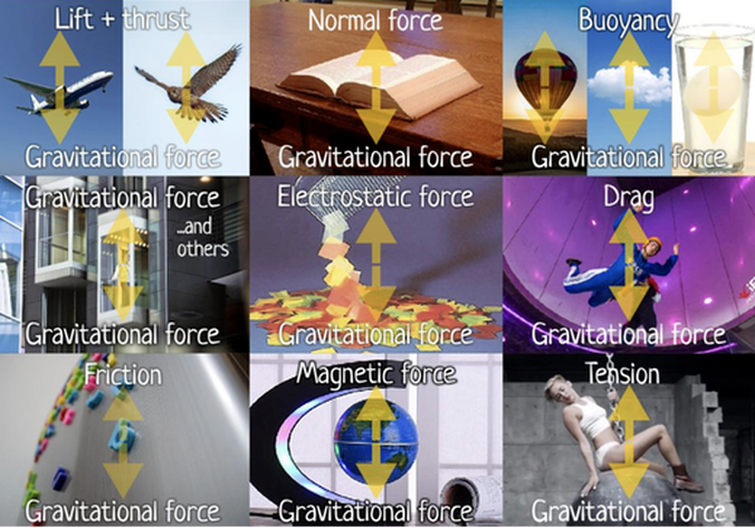
Gravity is not the only force. There are many other forces. An object can be influenced by more than a force, and gravity is only one of them. An object is accelerated according to the sum of the forces affecting it.
Flat-Earthers take the fact there are objects that move against the direction of gravity as ‘evidence’ of the non-existence of gravity. They are wrong. There are forces other than gravity affecting the object, having the opposite direction from gravity, with at least the same magnitude.
Airplanes and birds fly because of lift and thrust that is greater than the force of gravity. An object can be stationary atop another object because of the normal force. Hot air balloons, clouds, and eggs in salt water can float if their buoyancy exceeds the force of gravity affecting them. Pieces of paper can go upward and stick to a comb because the electrostatic force attracting them is greater than gravity. An indoor skydiver can float because of drag from the wind is the same as the force of gravity. Fridge magnets can stick to the surface of a fridge because of their friction is holding them against gravity. A floating globe floats because of magnetic force repel it up against gravity. A wrecking ball does not fall down because of the tension from its chain holding it against the force of gravity.
The force of gravity can even counteract each other in the form of counterweight. An elevator (lift) that takes us up and down in a skyscraper has a counterweight having about the same mass as the elevator itself. This way, the motor does not need to hold the entire weight of the elevator and spends much less energy.
All the phenomenon where an object is in motion against the direction of gravity can be explained by mechanics and physics in a consistent manner.
Flat-Earthers take the fact there are objects that move against the direction of gravity as ‘evidence’ of the non-existence of gravity. They are wrong. There are forces other than gravity affecting the object, having the opposite direction from gravity, with at least the same magnitude.
Airplanes and birds fly because of lift and thrust that is greater than the force of gravity. An object can be stationary atop another object because of the normal force. Hot air balloons, clouds, and eggs in salt water can float if their buoyancy exceeds the force of gravity affecting them. Pieces of paper can go upward and stick to a comb because the electrostatic force attracting them is greater than gravity. An indoor skydiver can float because of drag from the wind is the same as the force of gravity. Fridge magnets can stick to the surface of a fridge because of their friction is holding them against gravity. A floating globe floats because of magnetic force repel it up against gravity. A wrecking ball does not fall down because of the tension from its chain holding it against the force of gravity.
The force of gravity can even counteract each other in the form of counterweight. An elevator (lift) that takes us up and down in a skyscraper has a counterweight having about the same mass as the elevator itself. This way, the motor does not need to hold the entire weight of the elevator and spends much less energy.
All the phenomenon where an object is in motion against the direction of gravity can be explained by mechanics and physics in a consistent manner.
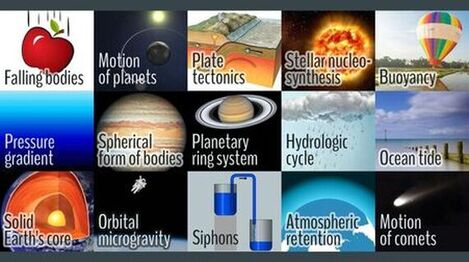
The Elegance of Gravity - The Force that Explains the Heliocentric Model
Our understanding of gravity explains a phenomenon clearly and directly. It is one idea, easy to understand, explains so many phenomena, can account for a large amount of data, and answers many questions. In other words, we can say that gravity is elegant.
In contrast, each of the different concepts in the flat Earth model requires a separate explanation and often in conflict with each other. We can say it is ugly. It is why flat-Earthers cannot accept that a single idea of gravity can explain so many phenomena.
In the beginning, Newton brought up the idea that everyday things falling down and the motion of planets are actually caused by the same phenomenon that he called gravity. In time, we also know gravity can also explain so many other things and led us to understand things we previously don’t know.
On the other hand, flat-Earthers are so used to inventing new “explanations” for every different phenomenon, which often in conflict with each other. They think that gravity can explain so many things is ridiculous and impossible, and that scientists are just making that up. Flat-Earthers often mention the many things that are explained by gravity to ridicule our position. In reality, gravity can, in fact, explain these things consistently. There is nothing ridiculous about that.
Our understanding of gravity explains a phenomenon clearly and directly. It is one idea, easy to understand, explains so many phenomena, can account for a large amount of data, and answers many questions. In other words, we can say that gravity is elegant.
In contrast, each of the different concepts in the flat Earth model requires a separate explanation and often in conflict with each other. We can say it is ugly. It is why flat-Earthers cannot accept that a single idea of gravity can explain so many phenomena.
In the beginning, Newton brought up the idea that everyday things falling down and the motion of planets are actually caused by the same phenomenon that he called gravity. In time, we also know gravity can also explain so many other things and led us to understand things we previously don’t know.
On the other hand, flat-Earthers are so used to inventing new “explanations” for every different phenomenon, which often in conflict with each other. They think that gravity can explain so many things is ridiculous and impossible, and that scientists are just making that up. Flat-Earthers often mention the many things that are explained by gravity to ridicule our position. In reality, gravity can, in fact, explain these things consistently. There is nothing ridiculous about that.
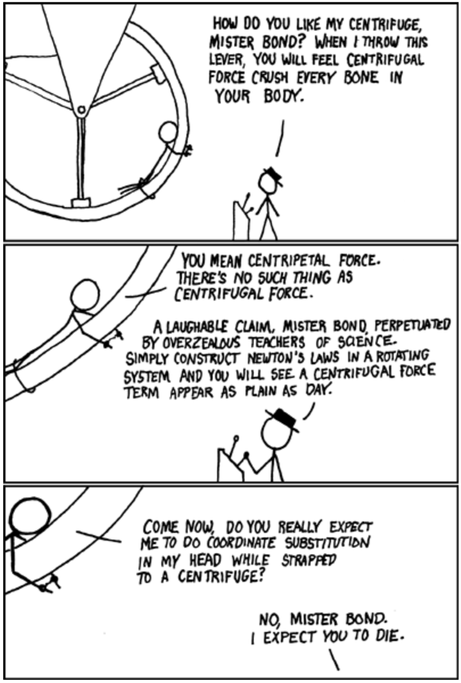
This comic presents a slightly orthogonal argument to the one on the question: the subject (James Bond) is arguing that the “centrifugal force doesn't exist”.
The villain mocks him by saying:
“a laughable claim, Mister Bond, perpetuated by overzealous teachers of science. Simply construct Newton's laws in a rotating system and you will see a centrifugal force term appear as plain as day”
Many people claim that “in general relativity, Gravity is not a force”. This is a well intentioned claim — and it has a nugget of some truth in it — but, as the comic says, it is an “overzealous claim”. It is a claim which takes an actual bit of science, and runs screaming with it naked through the streets hooting incoherently, until all that remains is nonsense. It's the sort of thing which is said specifically because it defies all human expectation.
So, let's get one thing straight: Pick up a heavy object, and drop it on your foot.
Hurts, right?
You'd have to be some kind of madman to argue that there wasn't a force or two involved in that! It's blindingly obvious to everyone that gravity is a force.
What is true is that, in the framework of General Relativity, gravity is a manifestation of the underlying geometry of space-time. Where space-time deviates from a flat, Minkowskian description, we observe the phenomenon known as “gravity". This differs hugely from the way the other forces we think about work, which (in a simplistic term), is via potential energy fields, and the gradients thereof. It would, therefore, be tempting to state that, since gravity arises from the shape of space itself, it's not a “proper force”, like the others.
But, nonetheless, if you construct your equations of motion, you end up with things that are, undeniably, forces. You get effective potentials, and if you take the derivative of them you get … something that changes the direction of an object. Now, again, it is true that you can make these forces vanish by choosing a different observer, a different set of coordinates with which to measure the motion. But does that mean it's “not a force?” It seems ludicrous that because there is one specific frame of reference which doesn't see a force to ignore all of the other frames which, evidently, do see a force. It's throwing the baby out with the bathwater, and then throwing the bath out as well.
What the centrifugal/centripetal construction tells us is that, even in classical, “normal” physics, it is perfectly normal for forces to vanish when you change your point of view. Someone being crushed to death by a centrifuge is not going to be impressed when you tell them that there's “not a force” which is killing them! The correct conclusion is not that, because we can make them vanish by changing our coordinates, these things are not “real”, but that forces are not a universally agreed upon quantity.
It doesn't make sense to deny the overwhelming force-ness (technical term) of these objects, because they are really, really obviously forces. Even when they arise only due to a particular coordinate choice in a particular part of a curved spacetime — it is ludicrous just to say “nah, not a force”. You can make a distinction (they're often called “pseudoforces”), but to deny that they are what they are is….just playing word games. It's just that it's a very complicated force that arises in different ways depending on who looks at it.
The villain mocks him by saying:
“a laughable claim, Mister Bond, perpetuated by overzealous teachers of science. Simply construct Newton's laws in a rotating system and you will see a centrifugal force term appear as plain as day”
Many people claim that “in general relativity, Gravity is not a force”. This is a well intentioned claim — and it has a nugget of some truth in it — but, as the comic says, it is an “overzealous claim”. It is a claim which takes an actual bit of science, and runs screaming with it naked through the streets hooting incoherently, until all that remains is nonsense. It's the sort of thing which is said specifically because it defies all human expectation.
So, let's get one thing straight: Pick up a heavy object, and drop it on your foot.
Hurts, right?
You'd have to be some kind of madman to argue that there wasn't a force or two involved in that! It's blindingly obvious to everyone that gravity is a force.
What is true is that, in the framework of General Relativity, gravity is a manifestation of the underlying geometry of space-time. Where space-time deviates from a flat, Minkowskian description, we observe the phenomenon known as “gravity". This differs hugely from the way the other forces we think about work, which (in a simplistic term), is via potential energy fields, and the gradients thereof. It would, therefore, be tempting to state that, since gravity arises from the shape of space itself, it's not a “proper force”, like the others.
But, nonetheless, if you construct your equations of motion, you end up with things that are, undeniably, forces. You get effective potentials, and if you take the derivative of them you get … something that changes the direction of an object. Now, again, it is true that you can make these forces vanish by choosing a different observer, a different set of coordinates with which to measure the motion. But does that mean it's “not a force?” It seems ludicrous that because there is one specific frame of reference which doesn't see a force to ignore all of the other frames which, evidently, do see a force. It's throwing the baby out with the bathwater, and then throwing the bath out as well.
What the centrifugal/centripetal construction tells us is that, even in classical, “normal” physics, it is perfectly normal for forces to vanish when you change your point of view. Someone being crushed to death by a centrifuge is not going to be impressed when you tell them that there's “not a force” which is killing them! The correct conclusion is not that, because we can make them vanish by changing our coordinates, these things are not “real”, but that forces are not a universally agreed upon quantity.
It doesn't make sense to deny the overwhelming force-ness (technical term) of these objects, because they are really, really obviously forces. Even when they arise only due to a particular coordinate choice in a particular part of a curved spacetime — it is ludicrous just to say “nah, not a force”. You can make a distinction (they're often called “pseudoforces”), but to deny that they are what they are is….just playing word games. It's just that it's a very complicated force that arises in different ways depending on who looks at it.
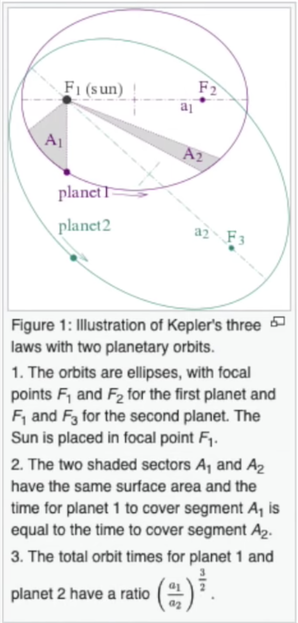
Gravity - Science has understood that masses attract other masses for centuries. Newton described that attraction as a force that is proportionate to the product of the two masses divided by the distance between them squared. This described the magnitude or the action of the force.
Einstein in his general theory of Relativity in 1916 described the cause of gravity. Where Newton did not understand the cause of gravity and just considered it an intrinsic property of matter and instantaneous in its action, where Einstein considered it to be a warping of spacetime and its effect travelled at the speed of light.
If sun disappeared, Newton instant, Einstein 8 minutes.
Now in most applications in the universe we can describe Gravity as a force under Newtonian gravity. The actual nuts and bolts of the cause of gravity is best described by Einstein.
Attractive force between masses. In the interaction between the masses in the force that is being measured.
General relativity says that gravity is a distortion of space-time by mass, It is measurable by the Newtonian Force of Gravity!
Universal Law of Gravity. Force of attraction proportionate.
Only indirectly.
Newton describes the action of Gravity where Einstein describes the cause of gravity. In essence they are two wings of the same bird.
Even Einstein knew acceleration requires a force.
G.R. is an explanation of why there is an apparent force.
This force is calculated with Newton's laws.
Einstein in his general theory of Relativity in 1916 described the cause of gravity. Where Newton did not understand the cause of gravity and just considered it an intrinsic property of matter and instantaneous in its action, where Einstein considered it to be a warping of spacetime and its effect travelled at the speed of light.
If sun disappeared, Newton instant, Einstein 8 minutes.
Now in most applications in the universe we can describe Gravity as a force under Newtonian gravity. The actual nuts and bolts of the cause of gravity is best described by Einstein.
Attractive force between masses. In the interaction between the masses in the force that is being measured.
General relativity says that gravity is a distortion of space-time by mass, It is measurable by the Newtonian Force of Gravity!
Universal Law of Gravity. Force of attraction proportionate.
Only indirectly.
Newton describes the action of Gravity where Einstein describes the cause of gravity. In essence they are two wings of the same bird.
Even Einstein knew acceleration requires a force.
G.R. is an explanation of why there is an apparent force.
This force is calculated with Newton's laws.

1) Gravity - How come the flat earth model cannot predict why things fall 9.8 m/s^2.
What word? Units?
I claim things fall b/c Gravity
Flat earthers seem divided
Density/Buoyancy/Electromagnetism/UPward accelerating disk.
Skydiving, bunge-jumping, roller coasters, diving into water,
Free fall...
Standing, jumping
Moon you can jump 6 times higher because the gravity is weaker.
First explain how Galileo first discovered this that ALL objects near the earth's surface fall (regardless of mass) at 9,8 m/^s^2 ignoring air resistance and then how Newtons equations predicted this value precisely. Einsteins relativity even more precisely.
Than outline and Explore the Flat earth model of Gravity that attempts to explain this in terms of density, buoyancy and electric force model and how there are MANY obvious problems that don't work with this model of why things fall to the ground. Flat earth model also cannot make any predictions (unlike Newtons laws).
What word? Units?
I claim things fall b/c Gravity
Flat earthers seem divided
Density/Buoyancy/Electromagnetism/UPward accelerating disk.
Skydiving, bunge-jumping, roller coasters, diving into water,
Free fall...
Standing, jumping
Moon you can jump 6 times higher because the gravity is weaker.
First explain how Galileo first discovered this that ALL objects near the earth's surface fall (regardless of mass) at 9,8 m/^s^2 ignoring air resistance and then how Newtons equations predicted this value precisely. Einsteins relativity even more precisely.
Than outline and Explore the Flat earth model of Gravity that attempts to explain this in terms of density, buoyancy and electric force model and how there are MANY obvious problems that don't work with this model of why things fall to the ground. Flat earth model also cannot make any predictions (unlike Newtons laws).
to Newton’s 1/R2 force law that is the law for a sphere, not a disk
(9.8 m/s^2 drops off by 1/r^2)
Things are spherical in the universe
All the other planets are spheres including all the moons
Gravity on a spherical earth uniform on surface
Explains why oceans stick to earth
gravitational redshift
Escape Velocity
Altitude and Density - opposite what flat earthers say. Things weigh MORE at sea level, not less.
Earth's gravitation acceleration VARIES with altitude, depth, latitude, Local topography
Hill Sphere - Why moon orbits earth even though suns gravity pulls harder (need to add centrifugal acceleration
(9.8 m/s^2 drops off by 1/r^2)
Things are spherical in the universe
All the other planets are spheres including all the moons
Gravity on a spherical earth uniform on surface
Explains why oceans stick to earth
gravitational redshift
Escape Velocity
Altitude and Density - opposite what flat earthers say. Things weigh MORE at sea level, not less.
Earth's gravitation acceleration VARIES with altitude, depth, latitude, Local topography
Hill Sphere - Why moon orbits earth even though suns gravity pulls harder (need to add centrifugal acceleration
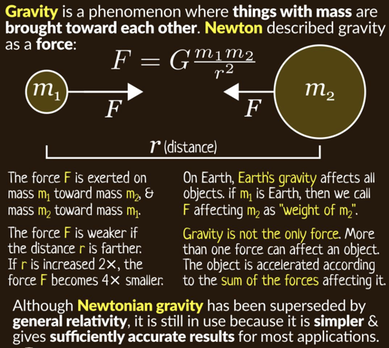
Newton's Universal Law of Gravitation
Gravity is what causes objects to fall towards the earth
It is the attraction between all matter
We can calculate very accurately on earth the magnitude of the gravitational force
By using newtons law of Universal gravitation
These two m's represent the masses of the two objects, r represents the distance
Between the centers of the objects and G is the gravitational constant.
The more massive the objects, the greater the force and the earth is extremely massive.
The earth is extremely massive so things tend to stay on the ground and if they are above the ground they fall.
We also know from Newton's second law,
F=ma
Fe=-mg
that force causes and acceleration,
So the gravitation force causes objects near the earth's surface to accelerate
Downwards at 9.8 m/s^2.
This means the downward velocity increases by 9.8 m/s per sec until it reaches terminal velocity due the air resistance the atmosphere produces.
This acceleration due to gravity decreases as you go farther from the earth but not by much.
If you go to another planet or moon that is less massive it decreases.
We know for a fact this equation describes our reality.
It was literally the basic science behind the Industrial revolution!!
The modern world may be powered by electricity but it is built by Newtons Laws!!!
NEWTONS LAWS CAN BE STUDIED AND USED TO BUILD THINGS!
FLAT EARTH PSEUDOSCIENCE CANNOT!!
Gravitational Mass = Inertial Mass (bowling ball vs a feather)
It takes force to make an object move from a dead stop to whatever speed it is going to go. So even though the bowling ball has more pull, it also has more mass that needs to get moving in the same amount of time.
The feather, even though it has less mass, requires less force to get started.
It all equals out and that is why everything falls at the same rate.
F= ma.
Its takes more force to move more mass.
Gravity is what causes objects to fall towards the earth
It is the attraction between all matter
We can calculate very accurately on earth the magnitude of the gravitational force
By using newtons law of Universal gravitation
These two m's represent the masses of the two objects, r represents the distance
Between the centers of the objects and G is the gravitational constant.
The more massive the objects, the greater the force and the earth is extremely massive.
The earth is extremely massive so things tend to stay on the ground and if they are above the ground they fall.
We also know from Newton's second law,
F=ma
Fe=-mg
that force causes and acceleration,
So the gravitation force causes objects near the earth's surface to accelerate
Downwards at 9.8 m/s^2.
This means the downward velocity increases by 9.8 m/s per sec until it reaches terminal velocity due the air resistance the atmosphere produces.
This acceleration due to gravity decreases as you go farther from the earth but not by much.
If you go to another planet or moon that is less massive it decreases.
We know for a fact this equation describes our reality.
It was literally the basic science behind the Industrial revolution!!
The modern world may be powered by electricity but it is built by Newtons Laws!!!
NEWTONS LAWS CAN BE STUDIED AND USED TO BUILD THINGS!
FLAT EARTH PSEUDOSCIENCE CANNOT!!
Gravitational Mass = Inertial Mass (bowling ball vs a feather)
It takes force to make an object move from a dead stop to whatever speed it is going to go. So even though the bowling ball has more pull, it also has more mass that needs to get moving in the same amount of time.
The feather, even though it has less mass, requires less force to get started.
It all equals out and that is why everything falls at the same rate.
F= ma.
Its takes more force to move more mass.

